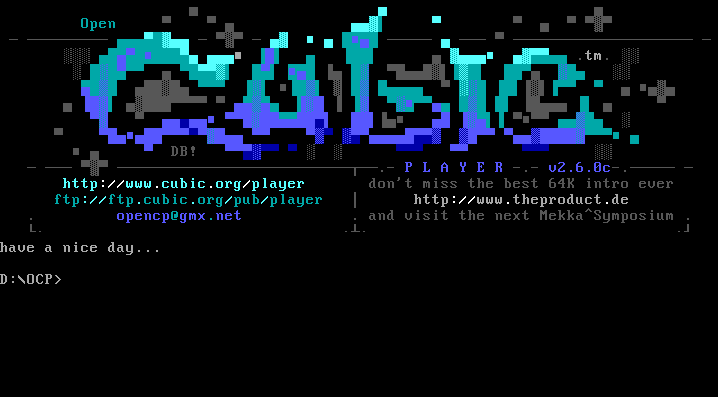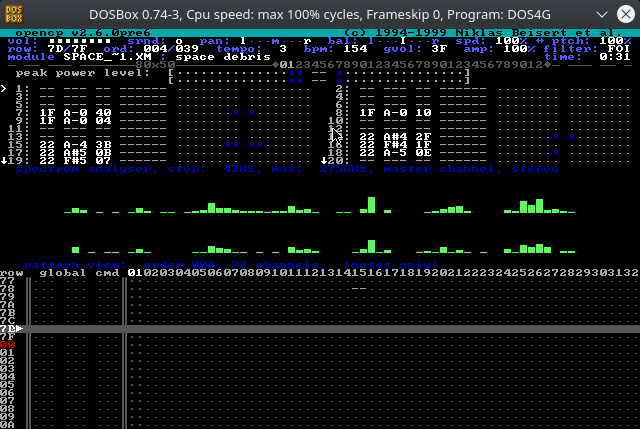
Just 26 years ago, listening to music on a computer was not so easy. Even before the advent of Windows 95, which boldly claims to be multimedia, people listened to music directly in the MS-DOS environment. And not only tracker, but also MP3. Shake off the dust from the old software and dive into the wonderful world of music of the early 90s.
To begin with, let's recall the popular music formats and equipment of those years. These were mainly the late 486DXs and the Pentiums that replaced them with a clock frequency of 60 to 133 MHz. MMX (MultiMedia eXtensions) technology, which accelerates decoding of audio and video streams, appeared only in 1997. Music fans of 1994 had to be content with what they have.
Without which you cannot listen to music on your computer? Without a sound card, of course. This sound is now embedded directly into motherboards and works, as they say, "out of the box." But there weren't that many sound cards before. Since 1989, Creative Technology has reigned supreme on the market with its famous Sound Blaster family of sound cards. Of course, there were also alternatives in the form of a rare and very expensive Gravis UltraSound (it was also called "goose" for GUS), as well as a dozen of its clones.

The last decade of the 20th century was marked by the rapid development of tracker music, rooted in the Amiga family of computers . These computers had a cool sound coprocessor, which made it possible to play reasonably high quality sampled music. There were corresponding formats (a cross between audio recording and MIDI), which allowed to store samples, sequences and parameters for playing notes.
The work of the composer was akin to the work of a programmer, since it was required to code the reproduction of each note by the instrument used in the required sequence with the required pitch and effects. The resulting files were called modules, and they themselves received the MOD extension.
A whole galaxy of musicians has formed who write such music. The cyberculture of the demoscene, which originated in the late 1970s, began to actively use tracker music and develop its own formats.
This is how the famous XM format, created by the Triton demogroup, appeared. It has significantly expanded the list of commands for creating effects and channels. 16-bit support and flexibility have made this format the mainstream for most tracker music. The MOD music community adheres to the principle of openness of their works, which makes it similar to the Open Source movement.
If you've subscribed to Hacker Magazine these years, you could find a whole collection of tracker music on almost every included CD. It could be played both with the original tracker application and with the help of third-party players such as the Open Cubic Player .

Surprising but true. If you had a 486DX2 processor and Windows 95, then some "dancing with a tambourine" was required to play the MP3. The thing is that the processor resources were simply not enough for everything and the sound was interrupted periodically. So if you wanted to listen to MP3 using WinAMP , you had to either switch to Mono mode, or halve the frequency of output signal discrediting. The "secret weapon" was Cubic Player, launched from under DOS. Its capabilities were quite enough to listen to a 128 kbit / s MP3 track in stereo.
Much time has passed since then. Nevertheless, it is possible to evaluate the work of Open Cubic Player even now, using the old version for MS-DOS (using DosBox) or the modern version available in the repositories of your Linux distribution.

Since I am using OpenSUSE, installing the player is reduced to a simple command:
sudo zypper install ocpI am sure that for Debian-like systems this will also work with the apt package manager . It is started by the ocp command , after which the built-in file manager opens. After selecting a song, confirm by pressing Enter and playback starts.

The beauty of the tracker formats was, of course, the small file size. Back in the days when the operating system was on three floppy disks, MP3 was almost an unaffordable luxury. It's no joke, each MP3 track, compressed in average quality, took from 3 to 5 megabytes of disk space. An XM track of the same length, compressed using a ZIP archiver, took only 300-500 kilobytes.
Even if you have never specifically listened to music in XM format, in any case, you came across it in programs for cracking licensed software (cracks and keygens). Among crackers, embedding tracker music has become somewhat of a tradition. Such tracks were also called chiptunes (from the English chiptune) for their small size, in a few tens of kilobytes.
Open Cubic Player was by no means the only MS-DOS player. Mpxplay also gained wide popularity , requiring at least 100 Mhz processor and supporting a completely modern set of formats. Among them there are audio compression formats that have become very popular - both lossless (ALAC, FLAC) and with them (Vorbis, MP3, WMA, etc ...). The player had the broadest capabilities for its time, even supporting the playback of audio streams over the network (Internet radio).

The development of multimedia capabilities of computers in the mid-90s became mainstream. Increasing capacities and new models of sound cards have begun to reproduce sound with increasing quality, and the advent of new surround sound technologies have revolutionized both music production and cinema and computer games. It's hard to say what awaits us in another 20 years. But seeing such significant progress, we can cautiously assume that it will be great!
